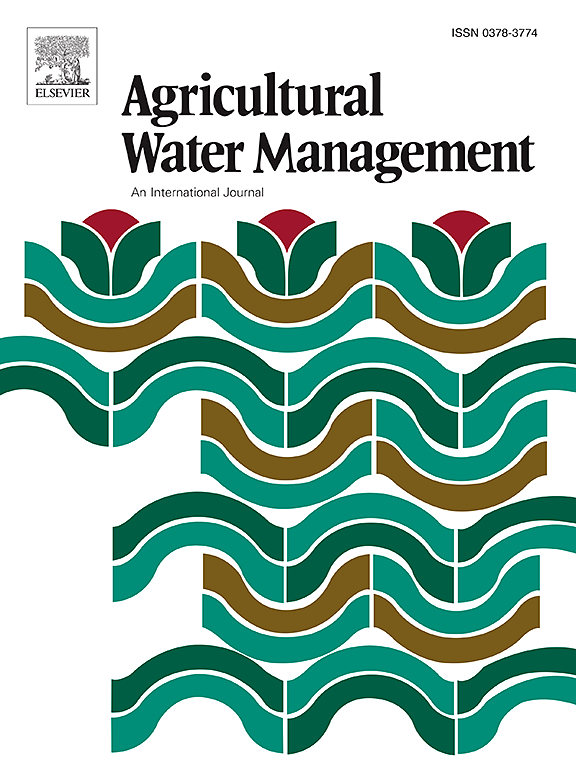Molecular and hydraulic responses of grapevine to water status and phenology under long-term differential irrigation treatments
IF 6.5
1区 农林科学
Q1 AGRONOMY
引用次数: 0
Abstract
Understanding seasonal interactions among hydraulic, chemical and molecular signalling under water deficit is crucial for improving vineyard irrigation strategies under climate change and increasing water scarcity. We aimed to test how irrigation strategies and phenology affect the hydraulic adjustment mechanisms of eight field-grown grapevine varieties under different long-term irrigation regimes: Full-irrigated (100 % ETc), deficit-irrigation (50 % Full-irrigated), and non-irrigated. Leaf pre-dawn water potential, leaf hydraulic conductivity (Kleaf), stomatal conductance, aquaporin gene expression and hormone content, were assessed at four key phenological stages, from pea-size to post-harvest. Stomatal closure was the earliest water-stress response across genotypes, while hormonal balance differentiated responsive from non-responsive genotypes regarding chemical signalling. Kleaf was primarily driven by phenology, peaking at early stages and declining thereafter. Aquaporin gene expression was both genotype- and phenology-dependent, with high activity during early stages followed by progressive down-regulation, aligned with changes in stomatal conductance and Kleaf and reflecting each variety iso-/anisohydric behaviour. This pattern confirms the role of aquaporins in grapevine hydraulic adjustments and stomatal regulation under decreasing water potentials. Aquaporins and Kleaf showed positive responses to water availability at post-harvest, indicating differential watering benefits among genotypes. Our results emphasize the need for field-phenotyping studies to fine-tune water management strategies in viticulture.
长期差速灌溉条件下葡萄对水分状态和物候的分子和水力响应
了解缺水条件下的水力、化学和分子信号的季节性相互作用对于改善气候变化和日益缺水的葡萄园灌溉策略至关重要。我们的目的是测试灌溉策略和物候如何影响8个田间葡萄品种在不同长期灌溉制度下的水力调节机制:完全灌溉(100% % ETc)、亏缺灌溉(50% %完全灌溉)和非灌溉。从豌豆大小到收获后的4个关键物候阶段,对叶片黎明前水势、叶片水力导度、气孔导度、水通道蛋白基因表达和激素含量进行了评估。气孔关闭是所有基因型中最早的水分胁迫响应,而激素平衡在化学信号传导方面区分了响应型和非响应型基因型。克利夫主要受物候驱动,早期达到高峰,之后逐渐下降。水通道蛋白基因的表达依赖于基因型和物候,在早期具有高活性,随后逐渐下调,与气孔导度和叶片的变化一致,反映了每个品种的等/各向异性行为。这一模式证实了水通道蛋白在水势降低条件下对葡萄叶片水力调节和气孔调节的作用。水通道蛋白和Kleaf在收获后对水分有效性表现出正响应,表明不同基因型的灌溉效益存在差异。我们的研究结果强调需要田间表型研究来微调葡萄栽培中的水分管理策略。
本文章由计算机程序翻译,如有差异,请以英文原文为准。
求助全文
约1分钟内获得全文
求助全文
来源期刊

Agricultural Water Management
农林科学-农艺学
CiteScore
12.10
自引率
14.90%
发文量
648
审稿时长
4.9 months
期刊介绍:
Agricultural Water Management publishes papers of international significance relating to the science, economics, and policy of agricultural water management. In all cases, manuscripts must address implications and provide insight regarding agricultural water management.
 求助内容:
求助内容: 应助结果提醒方式:
应助结果提醒方式:


